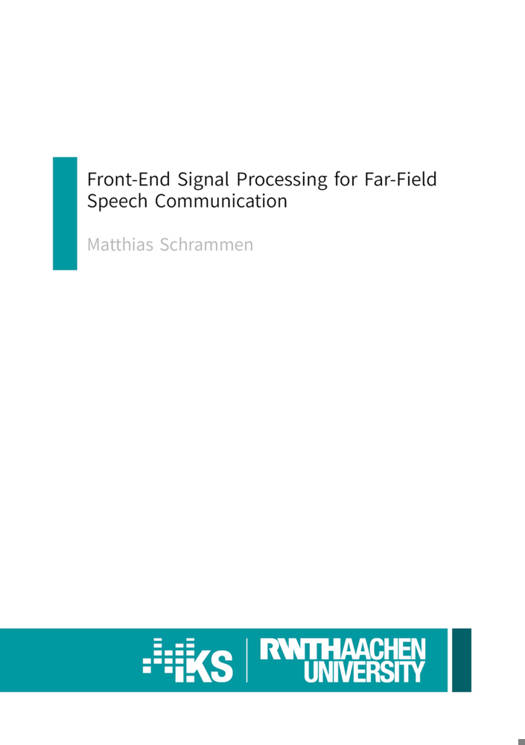
En raison d'une grêve chez bpost, votre commande pourrait être retardée. Vous avez besoin d’un livre rapidement ? Nos magasins vous accueillent à bras ouverts !
- Retrait gratuit dans votre magasin Club
- 7.000.000 titres dans notre catalogue
- Payer en toute sécurité
- Toujours un magasin près de chez vous
En raison de la grêve chez bpost, votre commande pourrait être retardée. Vous avez besoin d’un livre rapidement ? Nos magasins vous accueillent à bras ouverts !
- Retrait gratuit dans votre magasin Club
- 7.000.0000 titres dans notre catalogue
- Payer en toute sécurité
- Toujours un magasin près de chez vous
Front-End Signal Processing for Far-Field Speech Communication
Matthias Schrammen
49,45 €
+ 98 points
Description
Devices for speech communication operated in handsfree mode offer a very natural way of human communication. However, the signal-to-noise ratio (SNR) at the microphones of the device is typically low. This requires appropriate front-end signal processing (FESP) to enhance the desired speech signal.A beamformer (BF) can use the microphones of multiple devices to compensate for the low initial SNR, if all microphone positions are known. For estimating these positions the novel orthogonal geometric projection (OGP) is proposed as an approach with low user effort.For allowing a full-duplex speech communication, one acoustic echo canceller (AEC) per microphone channel is usually employed prior to the BF, which results in a high complexity. Therefore, change prediction (ChaP) is proposed that enables the use of a single AEC after the BF. By collecting information on the acoustic system over time, ChaP can facilitate the adaptation of the AEC such that this low-complexity single-AEC configuration can approach the performance of the high-complexity multi-AEC variant.Conventional linear AEC is actually insufficient for mobile consumer devices, because their low-cost loudspeakers and amplifiers show a significant nonlinear behavior. The novel dual-stage multi-channel Kalman (DualStage-MCK) algorithm also compensates for these nonlinear effects and does not suffer from limited modelling capabilities, slow tracking or high computational complexity, which are typical drawbacks of state-of-the-art solutions.The performance of the proposed solutions is evaluated in typical use cases and on realistic test data that includes device-specific acoustic shadowing and nonlinear effects acquired from specifically manufactured tablet, smart speaker and smartphone mockups.
Spécifications
Parties prenantes
- Auteur(s) :
- Editeur:
Contenu
- Nombre de pages :
- 208
- Langue:
- Anglais
- Collection :
- Tome:
- n° 2
Caractéristiques
- EAN:
- 9783844088090
- Date de parution :
- 02-12-22
- Format:
- Livre broché
- Dimensions :
- 150 mm x 13 mm
- Poids :
- 308 g

Les avis
Nous publions uniquement les avis qui respectent les conditions requises. Consultez nos conditions pour les avis.






